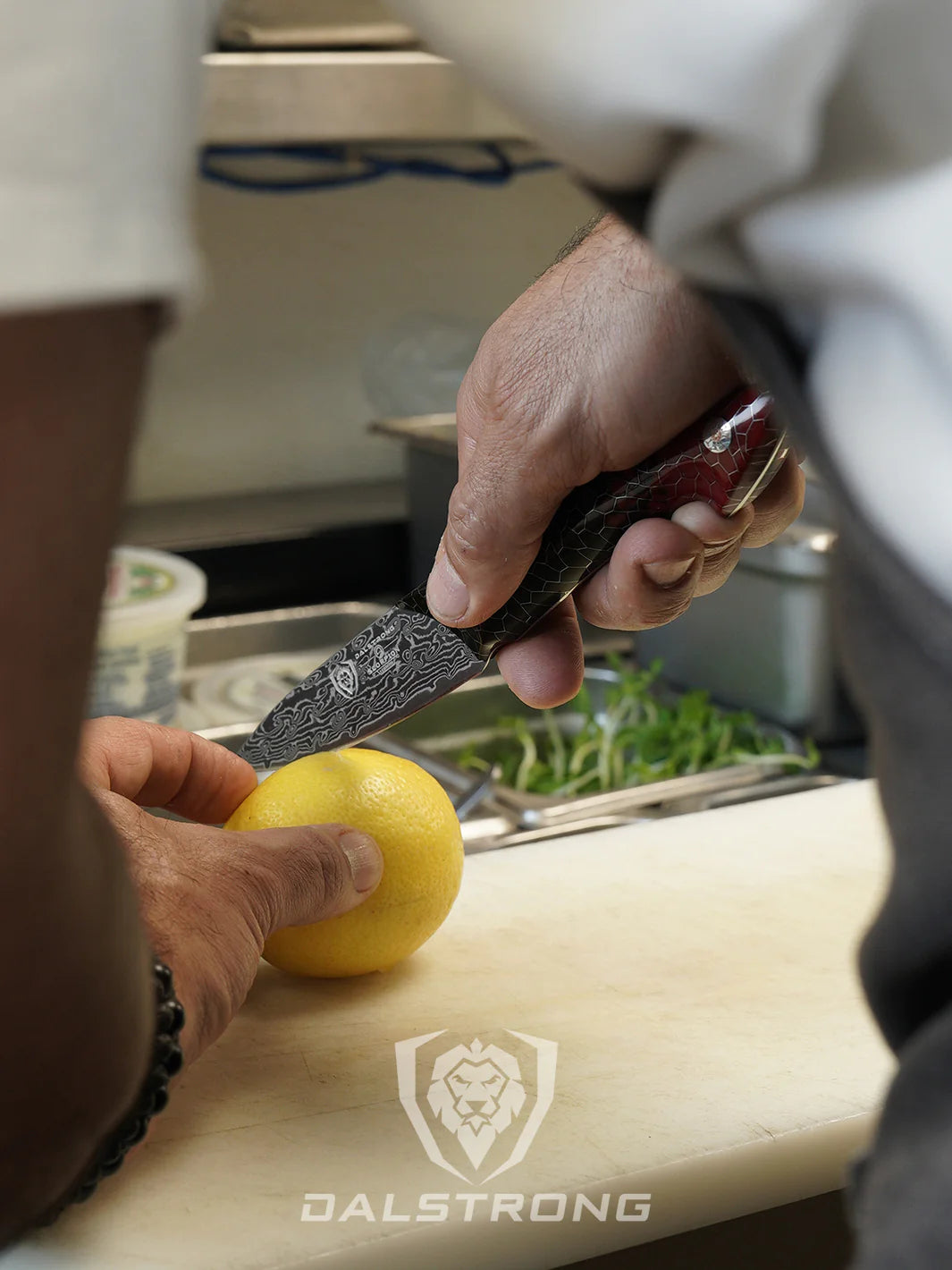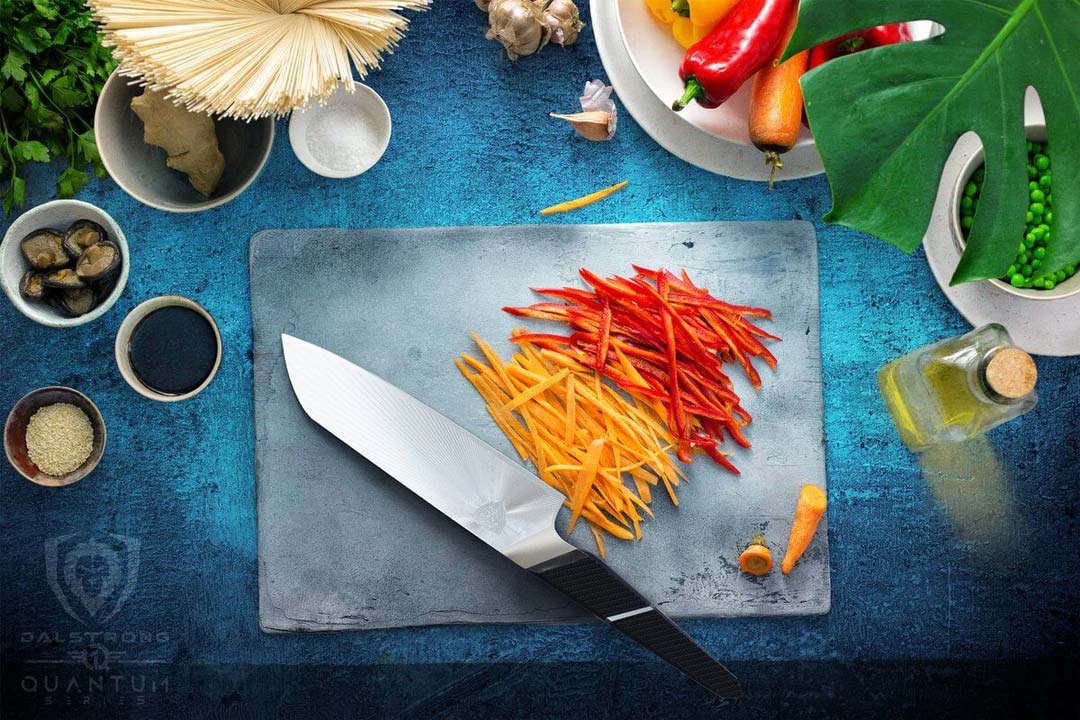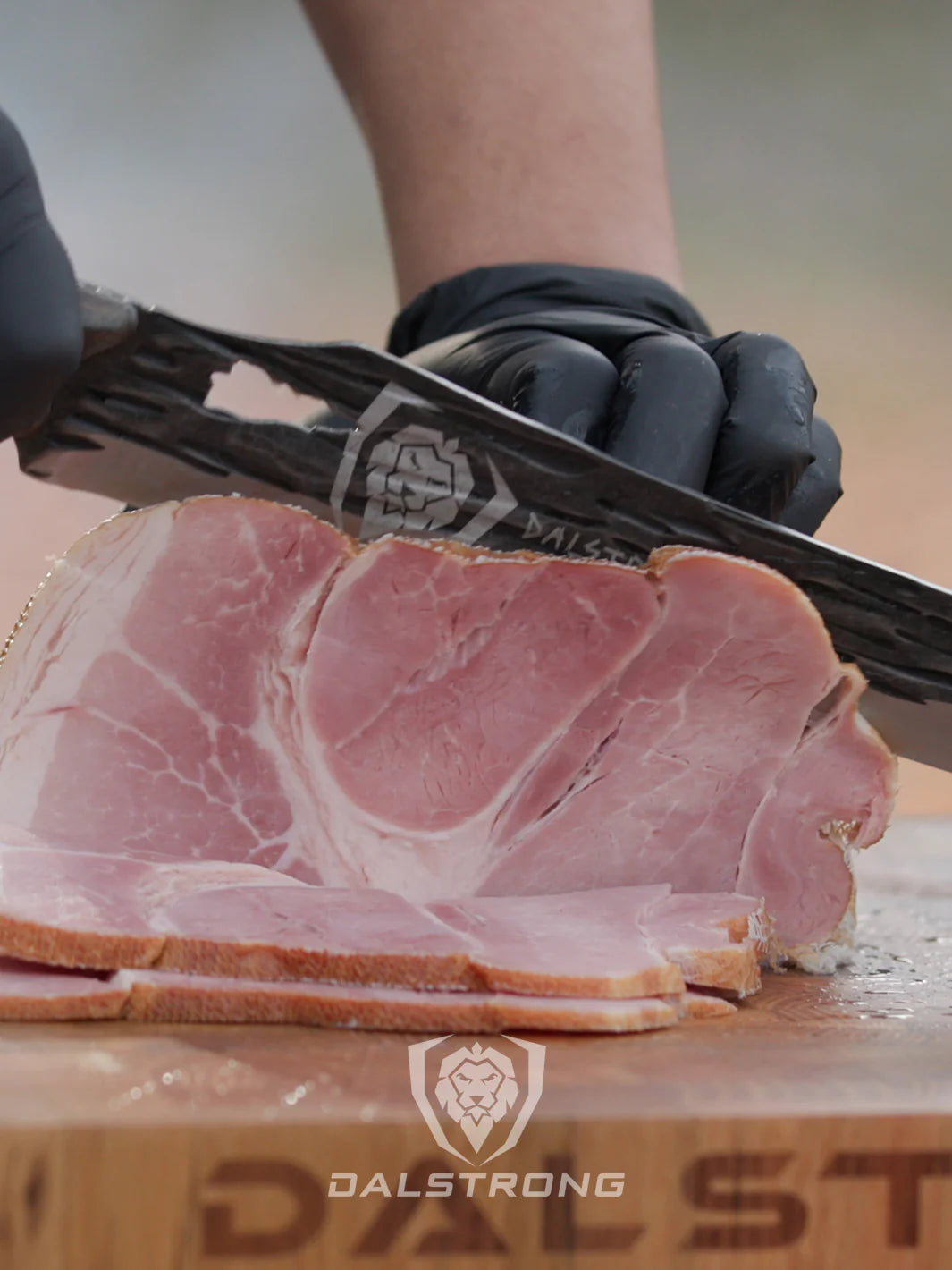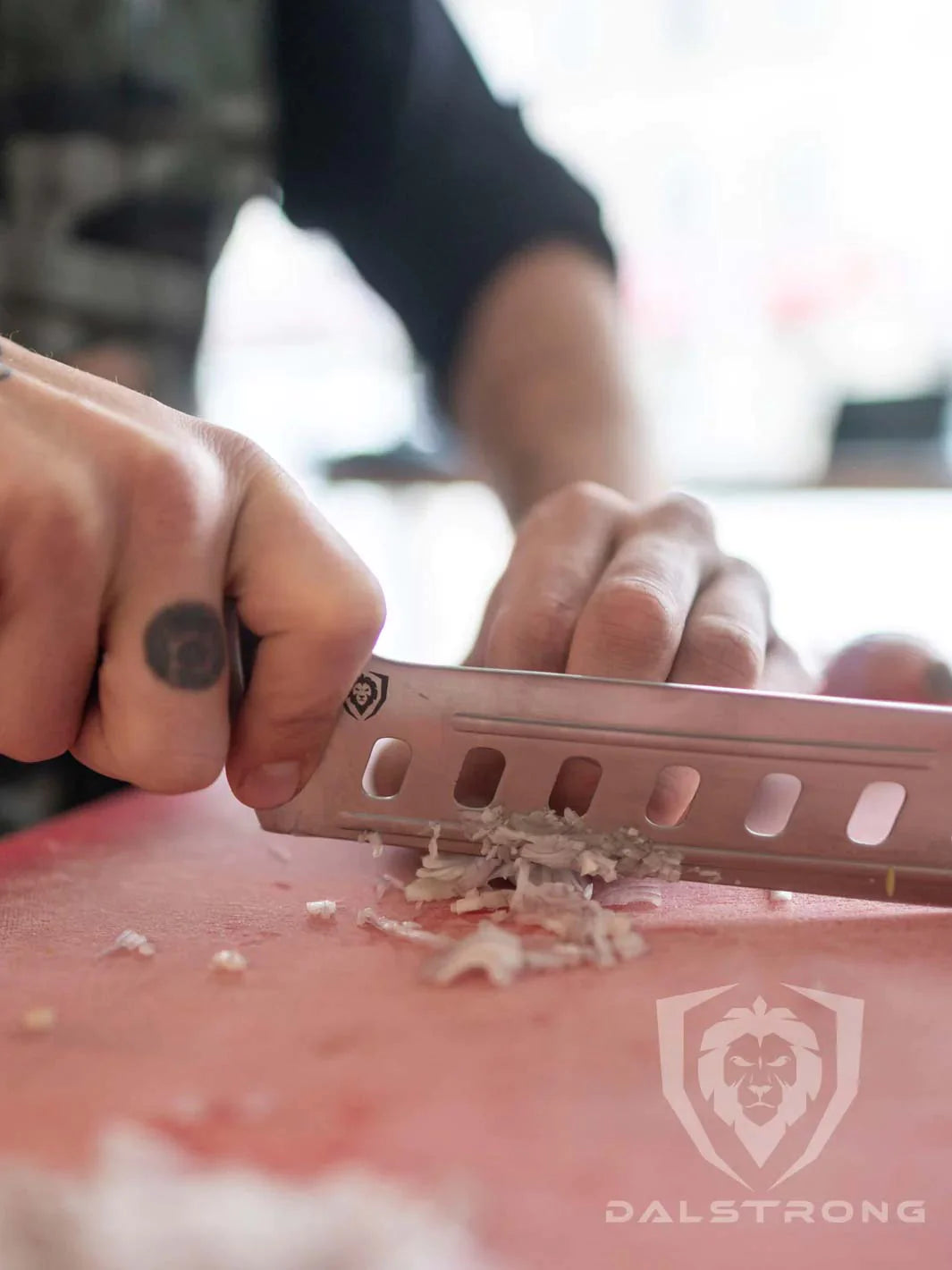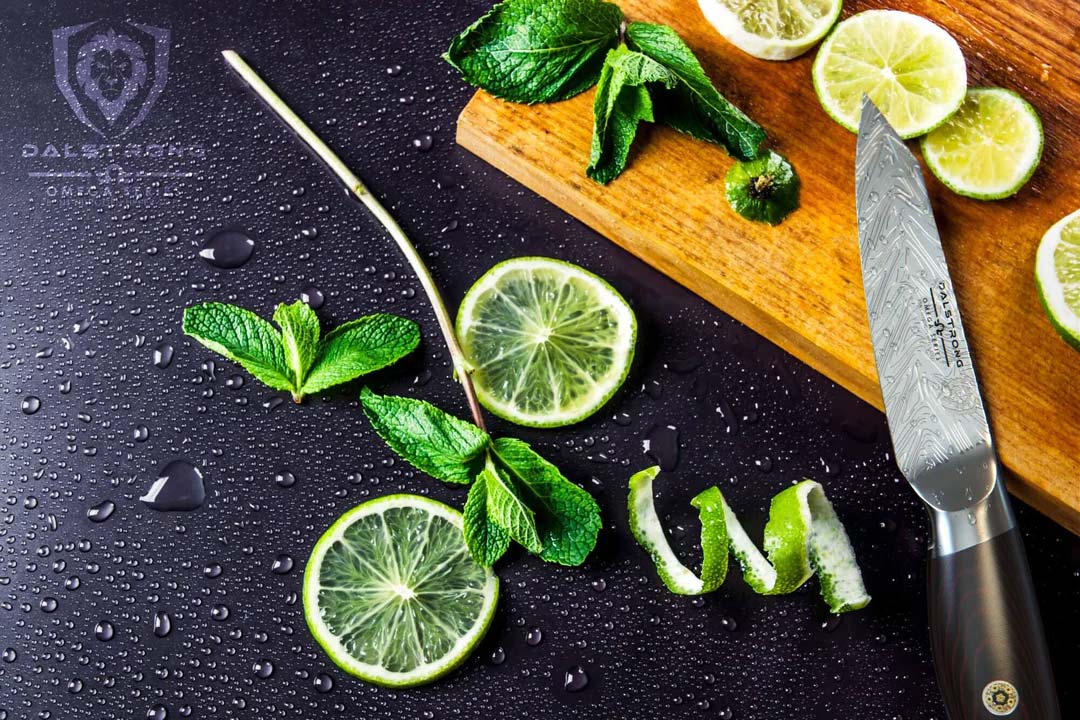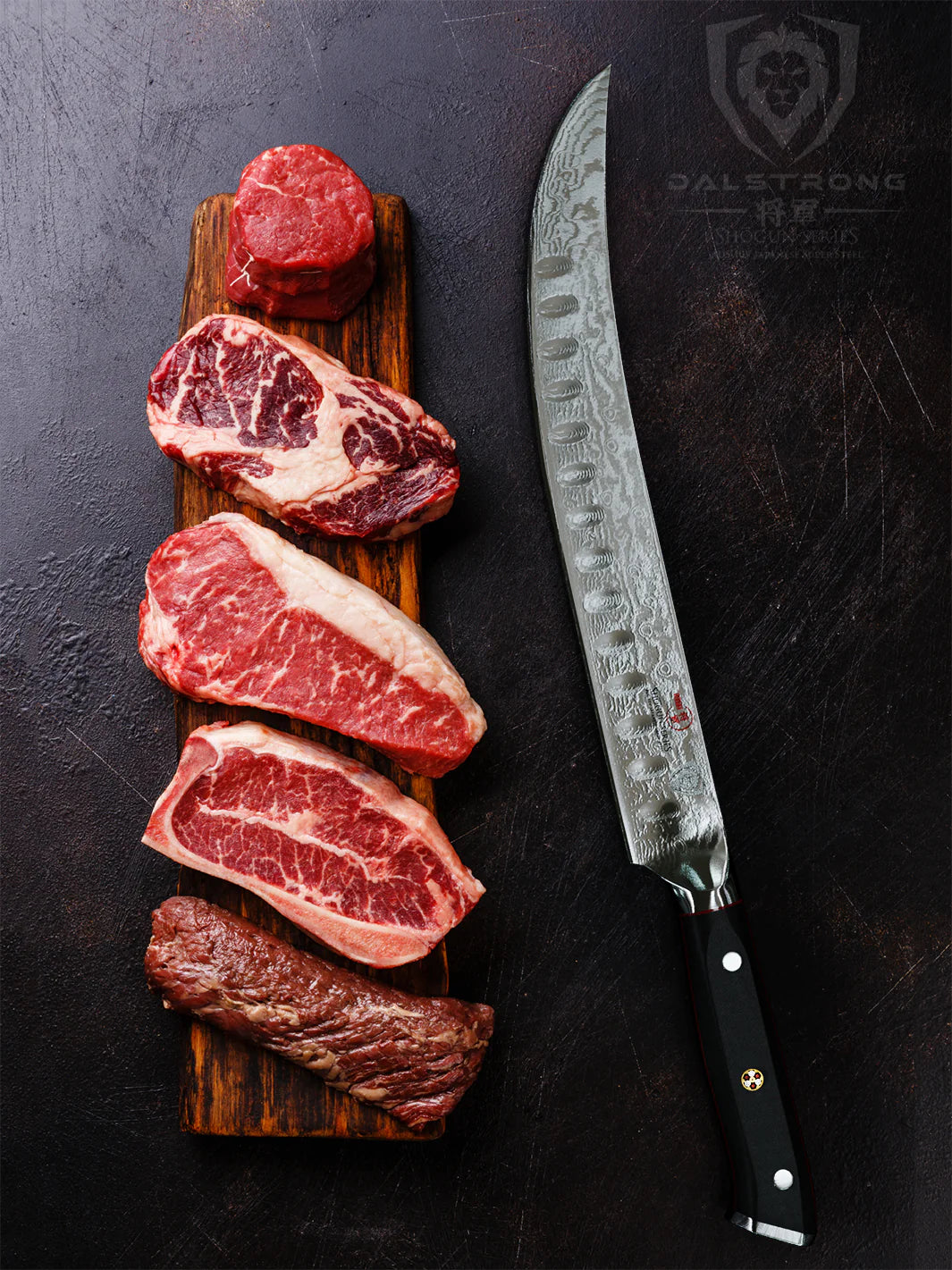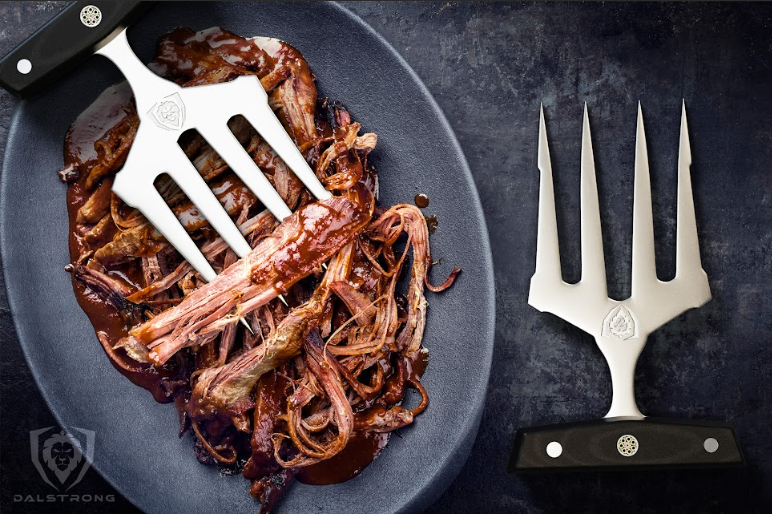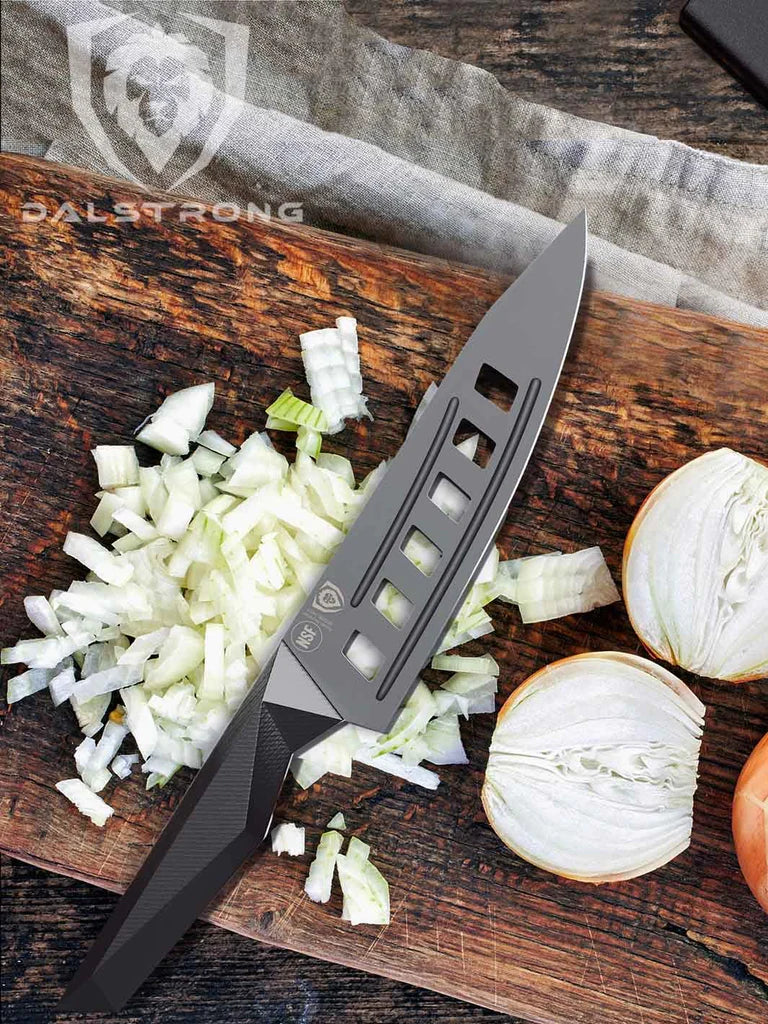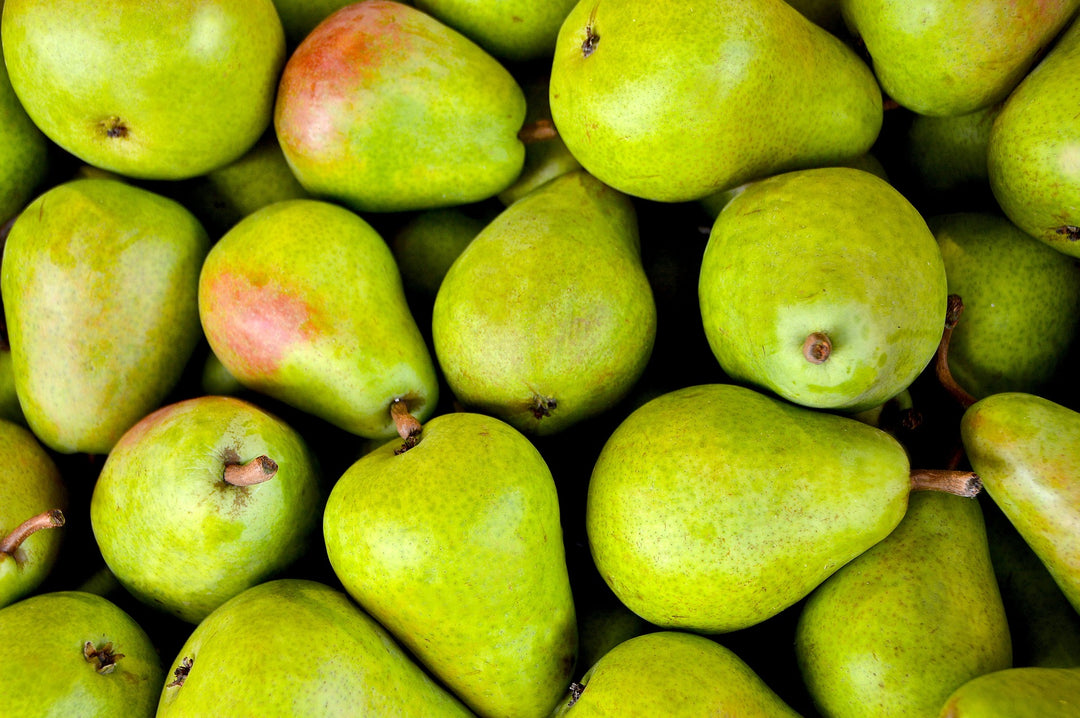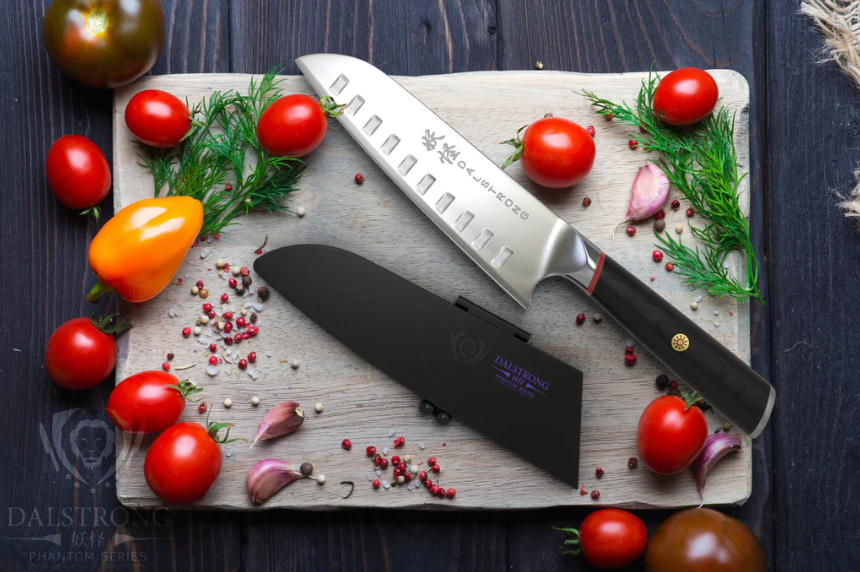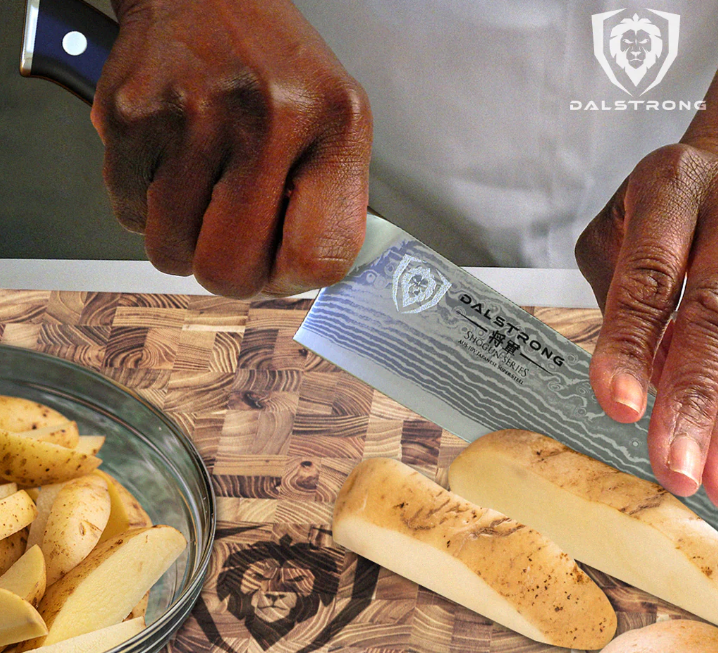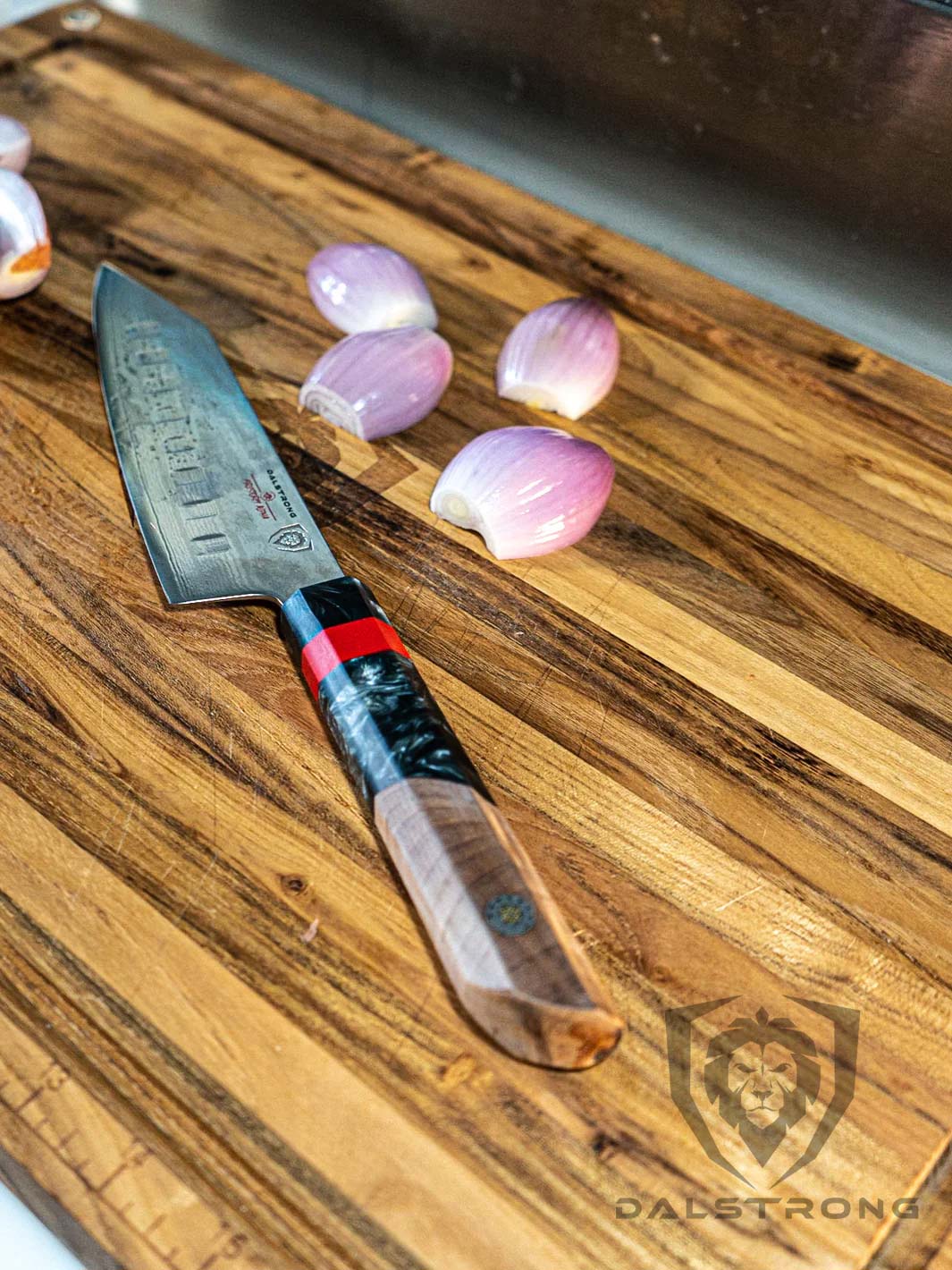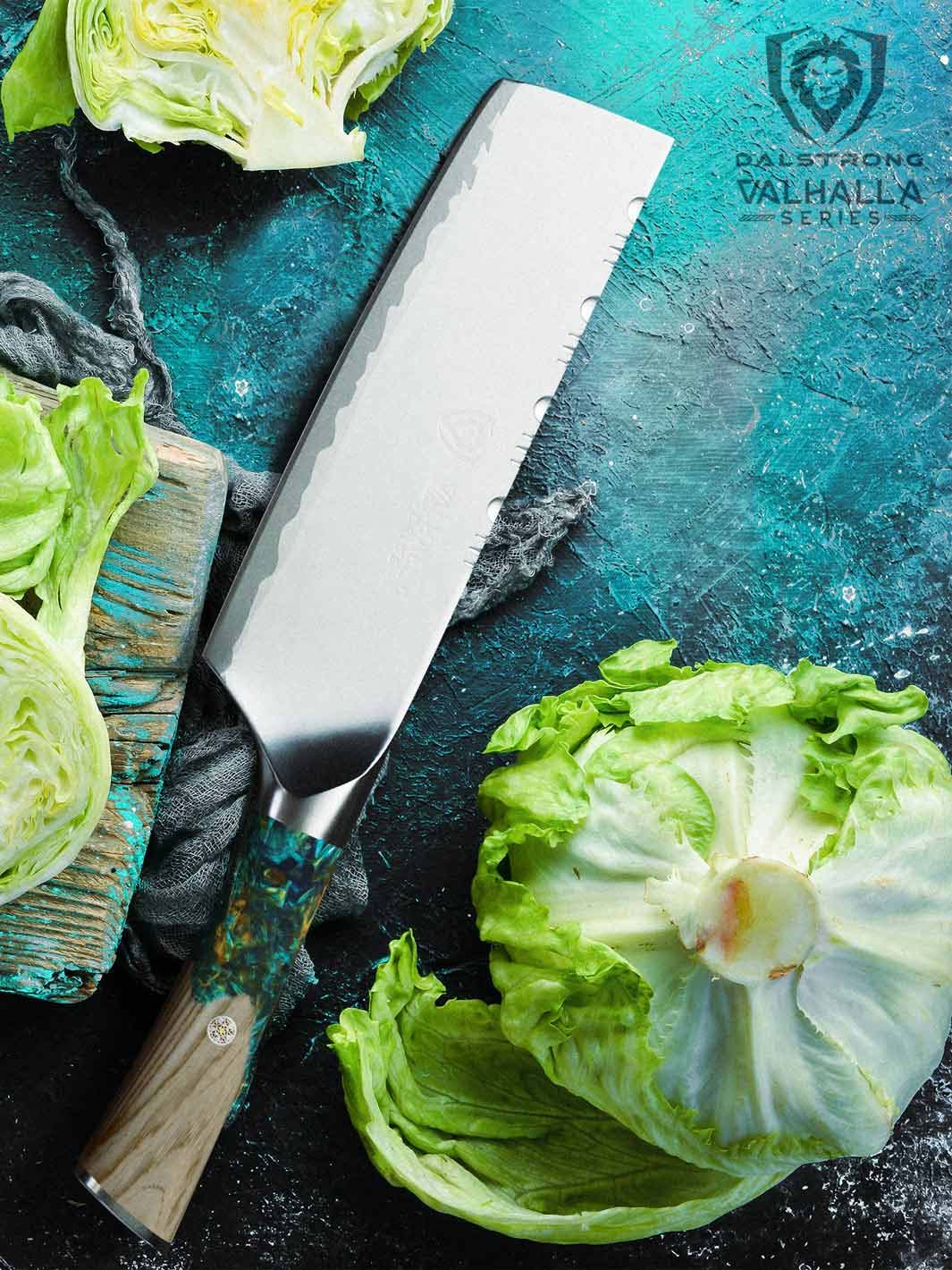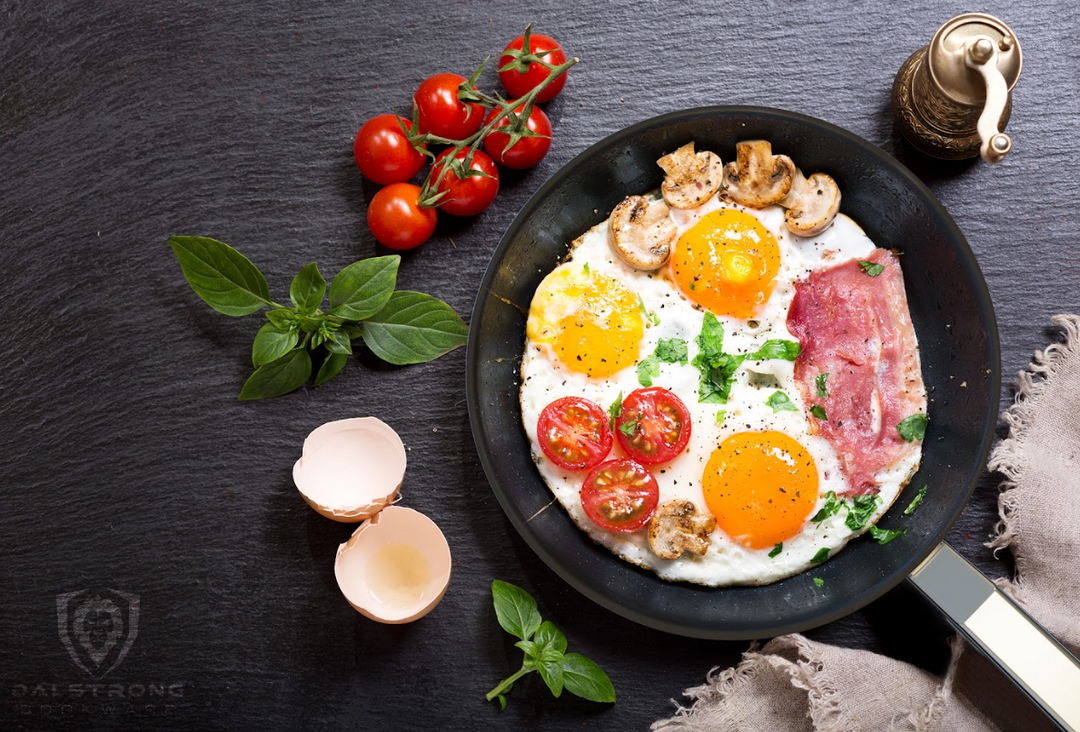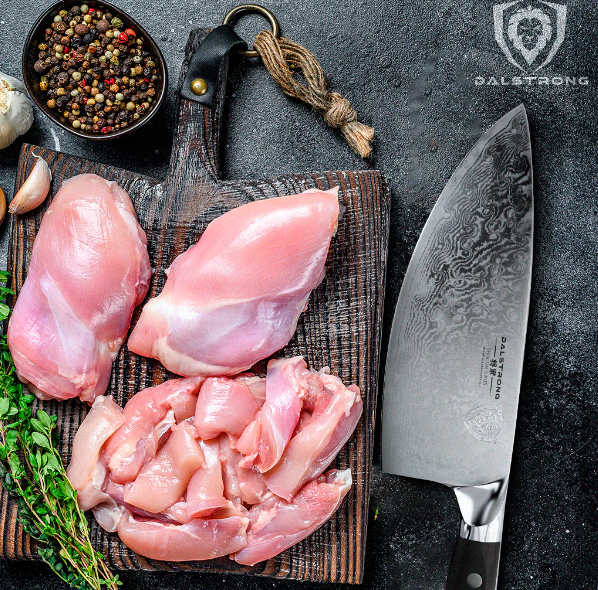How To Cut Lobster Tail Like A Boss
 Chef's Knife 8" Delta Wolf Series Dalstrong
Chef's Knife 8" Delta Wolf Series Dalstrong
Quick Overview: How To Cut Lobster Tail
- Prepare Your Workspace
- Place the lobster on its back with the tail shell facing towards you.
- Find the joint where the tail shell meets the body. This is the starting point for cutting.
- If using kitchen scissors, insert the tip of the scissors into the joint and cut through the top soft membrane on the underside of the tail all the way up to the fan at the end.
- If using a knife, place the tip of the knife into the joint where the tail meets the body. Apply steady, even pressure to cut through the soft membrane along the underside of the tail up to the fan at the end.
- Spread the tail halves apart lightly to reveal the lobster tail meat.
- Run your finger or a small spoon along the inside of the tail, dividing the tail meat from the top of the shell.
- Remove the Vein (Optional).
- The butterflied lobster tail meat is now ready to be used in your chosen recipe.
Jumping on a trip to cut a lobster tail is like holding a key to a treasure trove of beautiful flavors. With the right style and a dash of confidence, you're about to open the juicy essence hidden within those delicate shells. Picture yourself, knife in hand, poised to transform a humble lobster tail into a culinary masterpiece.
In this guide, we'll not only walk you through the steps on how to cut lobster tails like a boss but also in style.
1. How to Pick Fresh Lobsters

Make sure to pick fresh lobsters, so you get the best flavor and quality. Here are some tips to help you select the freshest lobsters:
Appearance
Look for lobsters that are actively moving and lively. They should move their legs and claws when handled. Avoid lobsters with listless or sluggish movements, as they might be sick or weak.
Shell
A fresh lobster will have a hard, intact shell. Avoid lobsters with missing limbs or cracks, as this can show damage or poor handling.
Color
A live lobster should have a lively, uniform color. This generaly ranges from dark greenish-brown to a deep greenish-black.
Antennae
They should be firm and straight. Broken or bent antennae can show a stressed or less healthy lobster.
Eyes
The lobster's eyes should not be cloudy and clear. Blemish or cloudy eyes can be a sign of aging or poor health.
Body
Look for lobsters with a chubby and filled-out body. Avoid lobsters that look shrunken or deflated.
Size
Choose a size that suits your needs. Big lobsters may have more tail meat, but they can also be strong. Smaller lobsters are frequently more tender.
Females with Eggs
It's normally recommended to keep away from female lobsters with visible eggs (roe) under their tail shell. This is a sign that the lobster is generating and may not have the best tail meat quality.
Ask for Assistance
Do not hesitate to ask for help from the store staff or fishmonger. They are normally knowledgeable about handling and selecting seafood.
Keep Them Cool
If you're not cooking lobster right away, keep them moist and cool. Place them in a cooler or store them in the refrigerator. Do not engulf them in water, as they are not freshwater animals.
Remember, it's always best to buy lobsters from a trusted source to ensure their quality and freshness. If you're not experienced in handling live lobsters, you may want to ask for help from the seafood vendor or fishmonger.
2. How To Cut Lobster Tail Like A Boss

Butterflied lobster tail like a pro needs some conviction, a sharp knife, and a steady hand. Here's a step-by-step guide to help you do it like a boss:
Materials Needed:
- Live or boiled lobster
- Kitchen scissors or a sharp chef's knife
- Chopping board
Steps:
- Prepare Your Workspace: Make sure your chopping board is firm and won't slip around. If you're using a live lobster, be cautious and handle it carefully.
- Secure the Lobster: If you're dealing with a live lobster, place it in the freezer for about 15-20 minutes. This will reduce its senses and make it effortless to handle.
- Position the Lobster: Place the lobster on its back with the tail shell facing toward you.
- Locate the Starting Point: Find the joint where the tail shell meets the body. This is the starting point for cutting.
- Use Kitchen Shears (or a Knife): If using kitchen scissors, insert the tip of the scissors into the joint and cut through the top soft membrane on the underside of the tail. Cut all the way up to the fan at the end. On the other hand, if you're using a knife, place the tip of a sharp chef's knife into the joint where the tail meets the body. Apply steady, even pressure to cut through the soft membrane along the underside of the tail. Continue cutting up to the fan at the end.
- Open the Tail: Spread the tail halves apart lightly to reveal the lobster tail meat.
- Extract the Meat: Run your finger or a small spoon along the inside of the tail, dividing the tail meat from the top of the shell.
- Remove the Vein (Optional): Check the lobster tail meat for a dark vein that runs down the center. This is the digestive tract and is safe to eat, but some people prefer to remove it for aesthetic reasons.
- Serve or Cook: The butterflied lobster tail meat is now ready to be used in your chosen recipe.
Tips:
- Use a sharp knife or kitchen scissors at all times to make sure clean cuts and lessen the risk of accidents.
- If the lobster is cooked, you may want to think about splitting it before cooking lobster.
- Practice makes perfect. If you're new to this, think about practicing on a few lobster tails to gain confidence.
Remember to handle live lobsters with caution and follow proper safety procedures. If you're not comfortable with the process, think about buying pre-cut and boiled lobster tails or seeking the assistance of a professional.
Read about how long cooked lobster lasts in the fridge here.
3. Recommended Dalstrong Tools To Use
1. Chef's Knife 8"Delta Wolf Series Dalstrong
The 8" Delta Wolf Series by Dalstrong emerges as a true champion. Made from high-carbon stainless steel, this knife is expertly designed to handle cutting tasks efficiently. It is ideal for both professional and aspiring chefs.
- Its fitting handle gives a secure and comfortable grip, minimizing hand fatigue during extended use.
- Features a sleek black blade that adds sophistication to your kitchen space.
- Easy to clean and maintain with its corrosion-resistant properties.
CONS:
- Some chefs may find the knife a little bit heavier than their usual preferences, which might need a short adjustment period.
2. Professional Kitchen Scissors Dalstrong
The Dalstrong's 420J2 Japanese Stainless Steel Kitchen Scissor is proof of functionality and performance. Created from premium 420J2 Japanese stainless steel and with professional chefs in mind, these scissors have sharpness, durability, and versatility like no other.
PROS:
- These scissors are sharp, durable, and have exceptional corrosion resistance.
- The cozy, fitting handles offer a secure grip, lowering hand fatigue during extended use and giving maximum control over every cut.
- Can snip through poultry bones, slice through packaging, and cut fresh herbs.
CONS:
- Some people may find scissors to have limited use compared to using knives.
3. Lionswood Colossal Teak Cutting Board
The Lionswood Colossal Teak Cutting Board is the perfect combination of style and practicality. Made of premium teak wood, this cutting board is not only beautiful but is also very durable and can withstand wear and tear.
PROS:
- Allows seamless handling of large cuts, multiple ingredients, and intricate culinary tasks.
- This cutting board can be a stylish platter or tray for presenting charcuterie, cheeses, and other appetizers.
- Resistant to moisture and stains, making this board easy to maintain and clean.
CONS:
- Due to its lavish dimensions and sturdy construction, this teak board is heavier compared to smaller, more portable cutting boards, which may affect the ease of handling and storage for some users.
4. Chef's Knife 6" Gladiator Series
Dalstrong's 6" Gladiator Series Chef's Knife, crafted from high-carbon ThyssenKrupp German steel, is not just your ordinary knife. It's a declaration of craftsmanship and precision. Featuring a blade with incredible power and finesse, this knife promises to be a vital asset in your kitchen.
PROS:
- Has corrosion-resistant properties, incredible resilience, and amazing edge retention.
- Created for comfort, the knife's handle gives a secure grip, minimizing hand fatigue even during prolonged use.
- Excellent for dicing, slicing, chopping, and accurate tasks like mincing.
CONS:
- Some people might find the 6-inch blade a little bit shorter than their preference, especially if they often work with larger cuts of meat or produce.
5. Paring Knife 3.5" - Frost Fire Series
Dalstrong's 3.5" Frost Fire Series Paring Knife emerges as a beacon of craftsmanship and quality with its premium Japanese steel. It is corrosion-resistant, durable, and has an impressive edge retention for long-lasting performance.
PROS:
- The Frost Fire Series paring knife features an uncommonly sharp edge, allowing for complex tasks like trimming, peeling, and shaping with unique precision.
- Features a unique frost pattern on the handle.
- Designed with an ergonomic handle, giving a secure grip and providing maximum control on any cutting tasks.
CONS:
- Some people may find this paring knife more fitted for professional or advanced culinary applications, possibly making it more than what a casual home cook might need.
4. Easy Grilled Lobster Tail Recipe
 Professional Kitchen Scissors 420J2 Japanese Stainless Steel Dalstrong
Professional Kitchen Scissors 420J2 Japanese Stainless Steel Dalstrong
Grilled butterflied lobster tail is a delicious dish that's surprisingly effortless to make. Here's a simple recipe to help you achieve a delicious result:
Ingredients:
- 2 lobster tails
- 4 tablespoons butter, melted
- 2 cloves garlic, minced
- 1 tablespoon fresh parsley, chopped
- Salt and pepper
- Lemon wedges (for serving)
Instructions:
- Prepare the lobster tails. Utilizing kitchen shears, carefully cut the top of the shell lengthwise. Be sure to cut through the top and down the center of the shell, but not through the tail meat. Gently pry the shell open, showing the lobster meat while keeping the shell intact.
- Preheat the grill to medium-high heat.
- Prepare the basting sauce. In a small bowl, mix the melted butter, minced garlic, chopped parsley, salt, and pepper.
- Brush the lobster meat with the butter mixture. Make sure to freely coat the exposed meat.
- Grill the lobster tails. Place the lobster tails on the grill, meat side down. Close the lid and grill for about 4-5 minutes.
- Flip the lobster tails, shell side down. Baste the meat again with the butter mixture.
- Close the lid and grill for an additional 4-5 minutes. The lobster meat should be cloudy and slightly charred at the edges when fully cooked.
- Check for Doneness. The lobster is done when it comes to an internal temperature of 140°F (60°C), and the meat is firm and opaque.
- Take out the lobster tails from the grill and let them rest for a couple of minutes. Serve with additional lemon wedges and any remaining butter mixture for dipping.
Tips:
- Adjust grilling time depending on the size of the lobster tails. Larger tails may require a couple of minutes more, while smaller ones might be done a bit faster.
- Be careful not to overcook the lobster, as it can become tough and lose its natural sweetness.
5. Frequently Asked Question
How do you cut lobster tails?
To cut a lobster tail, first, place it on a stable surface with the soft underside facing up. Use kitchen shears to carefully cut through the top and along the center of the tail, starting from the fan end towards the tip. Open the shell and smoothly divide the meat from the shell, keeping it intact. The lobster tail is now ready to cook or serve.
Do you split lobster tail before cooking?
Yes, dividing a lobster tail before cooking lobster can enhance flavor and allow for better seasoning. Use kitchen scissors to cut the top of the shell lengthwise, keeping the tail intact. However, if grilling whole, you can leave it unsplit for a visually attractive presentation.
How do you cut a lobster tail in the shell?
To cut a lobster tail in the shell, first, place the tail on a chopping board with the soft side facing up. Utilizing a sharp knife, carefully cut through the center of the shell, lengthwise, from the fan end to the tip. Be careful not to cut through the meat. Gently spread the shell open to show the meat, and it's ready to cook.
SHOP DALSTRONG KNIVES





































































































































































